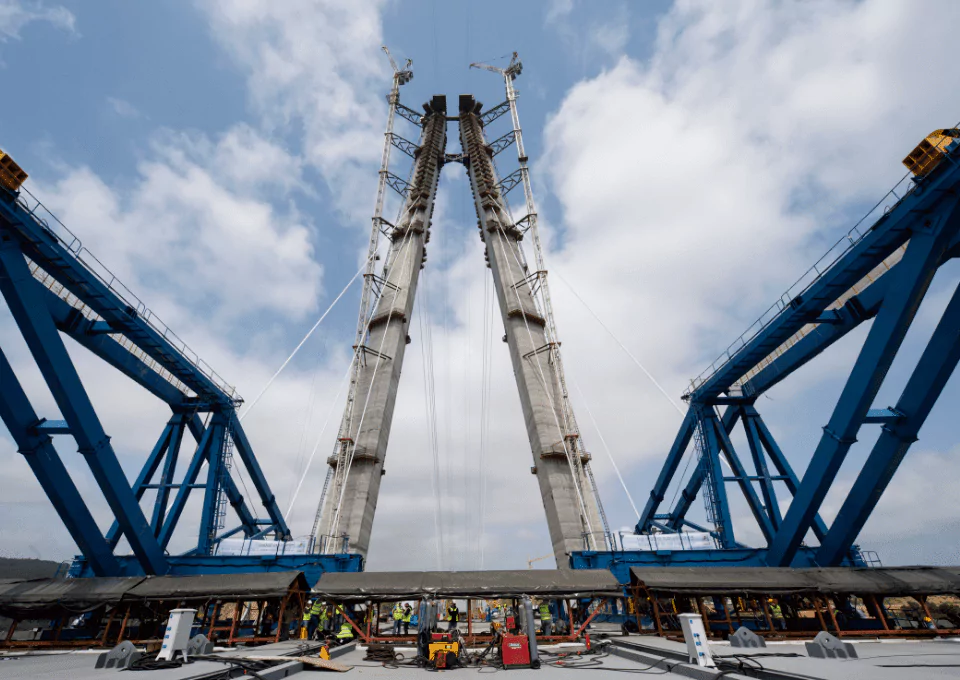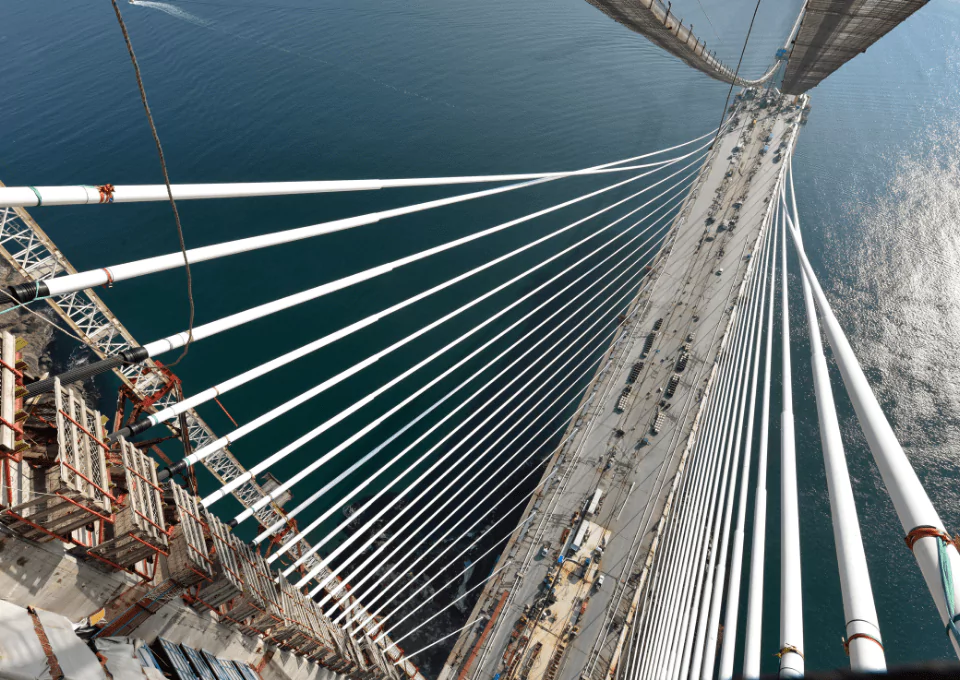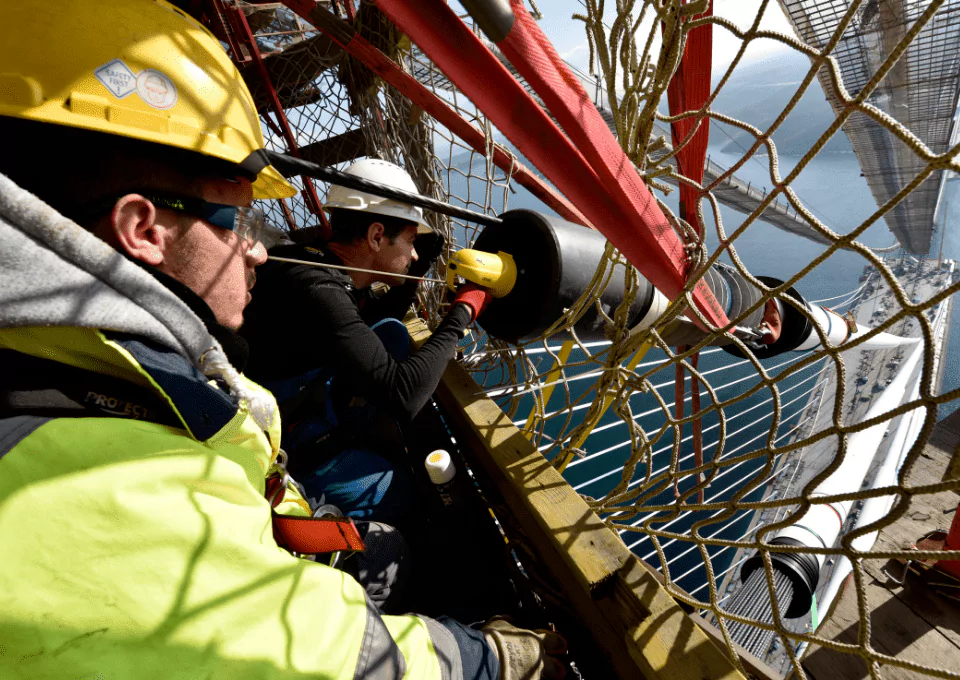
A heavy load
The highway and rail loads that were predicted meant ultra high-strength strand was needed, leading to the first use of Freyssinet’s 1,960 MPa cable strand – and setting another global record.
A total of 176 stay cables was installed, the longest of which measure more than half a kilometre and contain an incredible 151 strands, weighing in at almost 120 t. The capacity needed to test these cables exceeded that of the world’s biggest testing rigs; even the smallest stays on this project are large when set against those of standard cable-stayed bridges. To manufacture the 9,000 t of high-strength strand needed to produce these cables in such a short time demanded faultless quality control across our supply chain.

